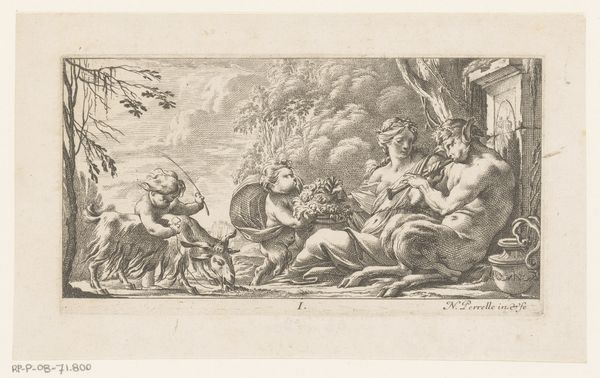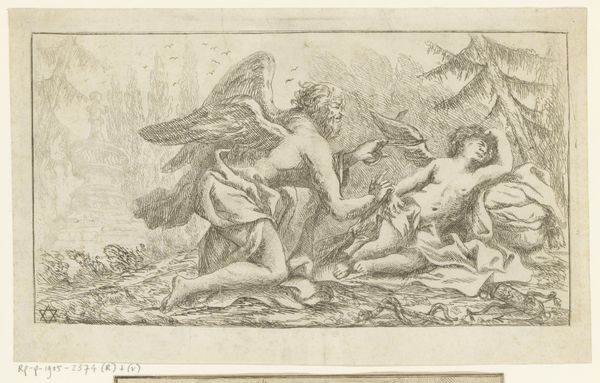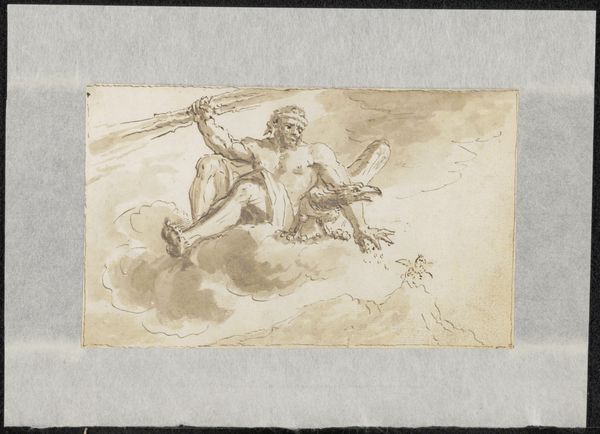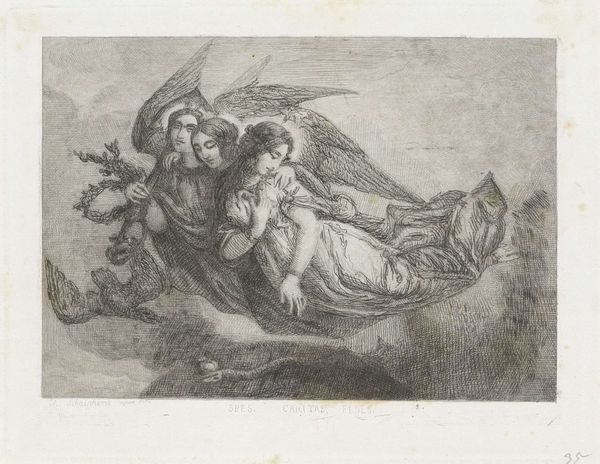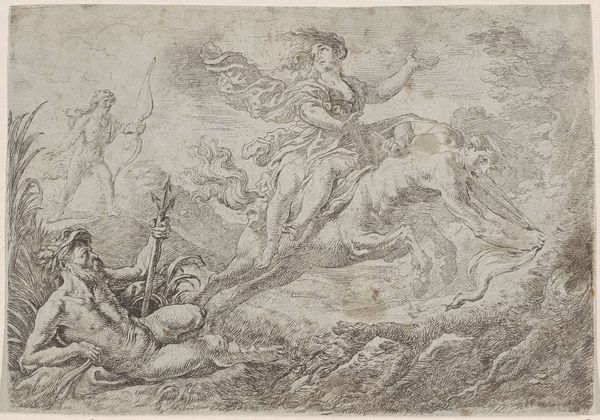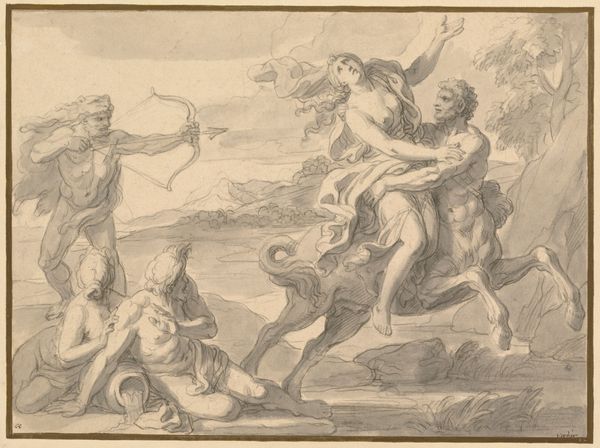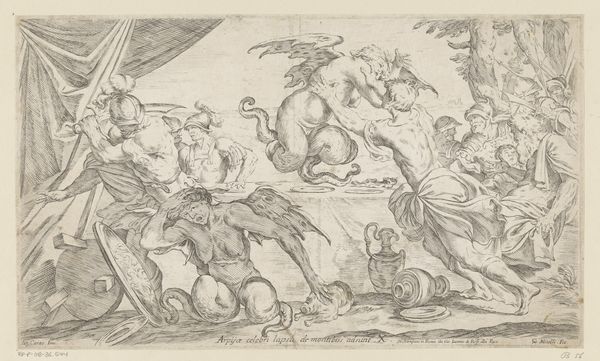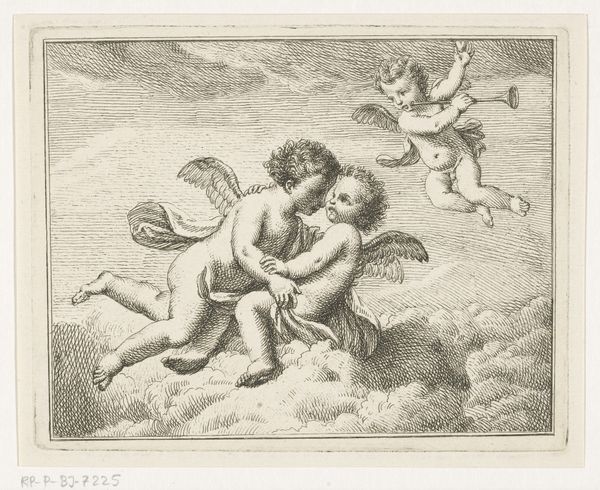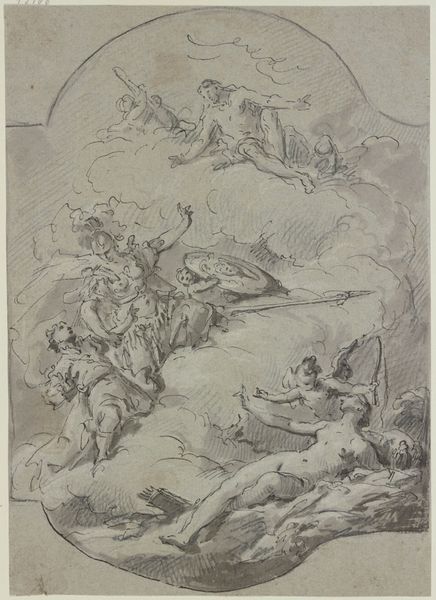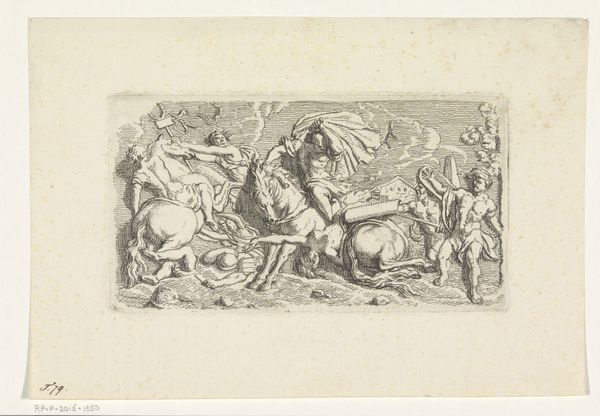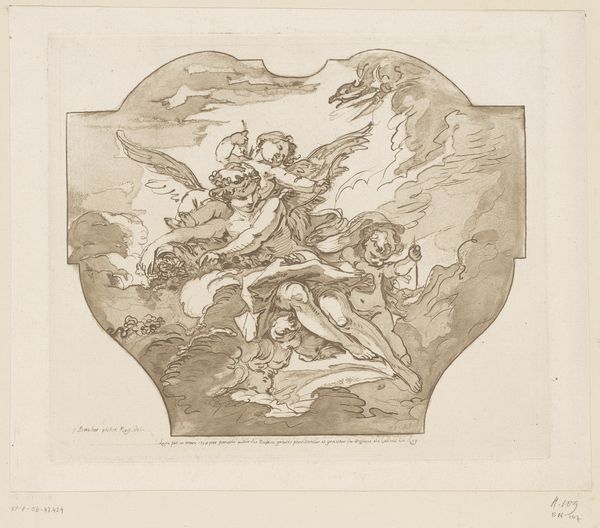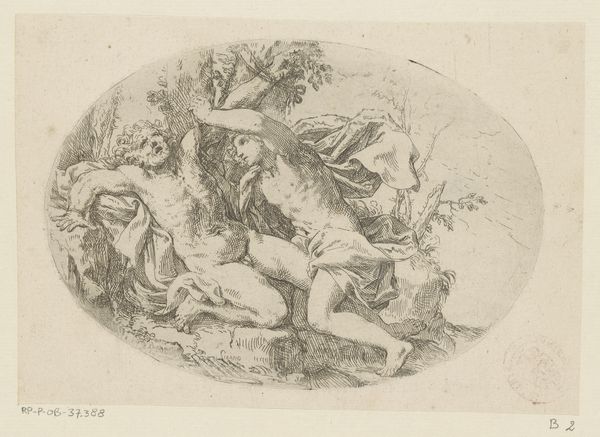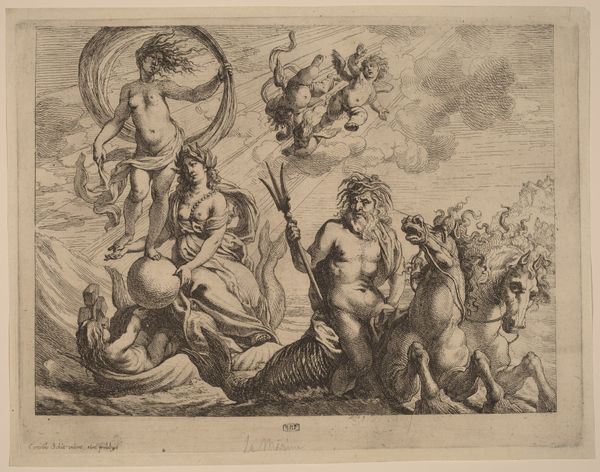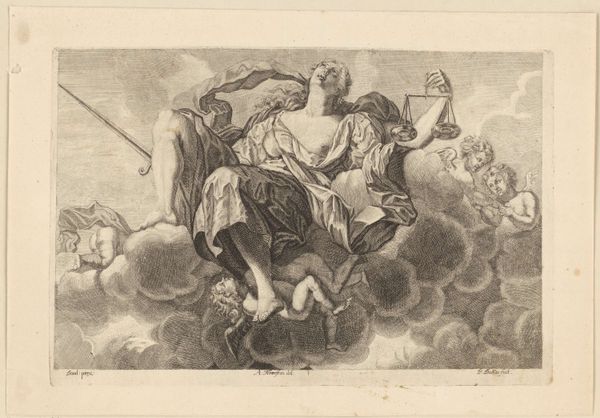
print, engraving
#
allegory
#
baroque
# print
#
history-painting
#
nude
#
engraving
Dimensions: height 103 mm, width 158 mm
Copyright: Rijks Museum: Open Domain
Editor: Here we have Marc Christoph Steudner’s engraving, "Loves of the Gods," which he worked on between 1686 and 1704. I’m immediately struck by the floating quality, this sense of weightlessness. What do you see in this print? Curator: This print embodies the theatricality inherent in Baroque art. The "Loves of the Gods" isn't just about classical mythology; it’s about the social and cultural values projected onto these figures. The prominent display and almost celebratory attitude toward nudity, for example, reflects the social acceptance, even embrace, of sensuality within certain elite circles. What impact might the distribution of such imagery have had on society at the time? Editor: I imagine it probably further reinforced class divisions, with the elites enjoying these images and the lower classes perhaps seeing them as a symbol of that divide. Curator: Exactly. Consider the role of the print as a medium, too. Engravings like this weren’t mass-produced as we understand it today, but they were more accessible than, say, an oil painting. The question then becomes, who had access to these prints? And how did they utilize these images to further construct and reinforce power dynamics? Editor: So, it's less about the figures themselves and more about how they were consumed and what that says about the people viewing them. Curator: Precisely. Baroque art served the powerful, reflecting their self-image and aspirations. By understanding this artwork, we reveal societal hierarchies. Editor: I never considered that the act of viewing could itself be a class marker. Curator: It highlights how art functions within social structures, impacting public life. Always look for these connections! Editor: That's a fascinating lens to view art through. It really broadens the potential meaning. Curator: Indeed. It also calls on us to reevaluate who decides what's valuable in art history, and for whom.
Comments
No comments
Be the first to comment and join the conversation on the ultimate creative platform.
